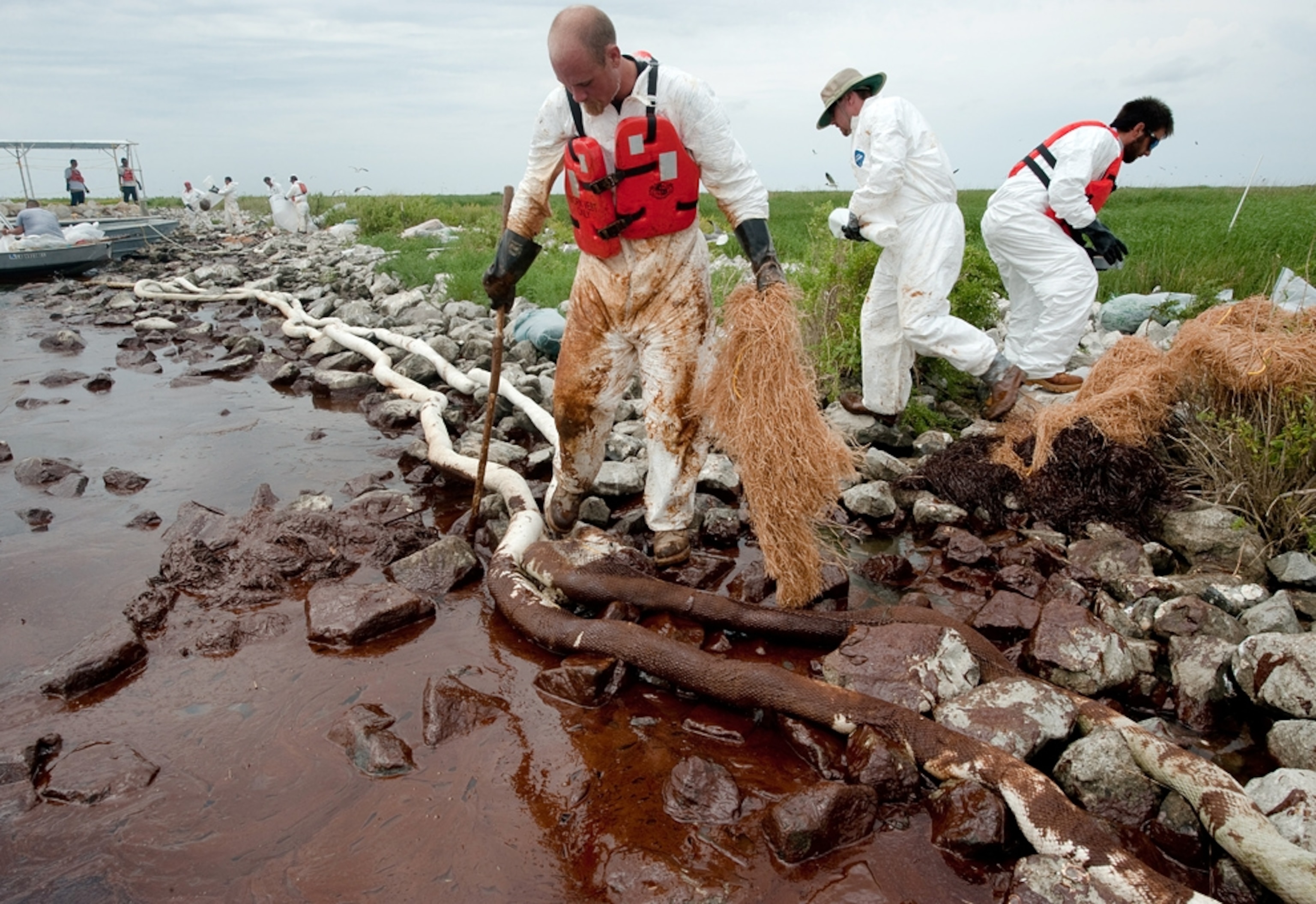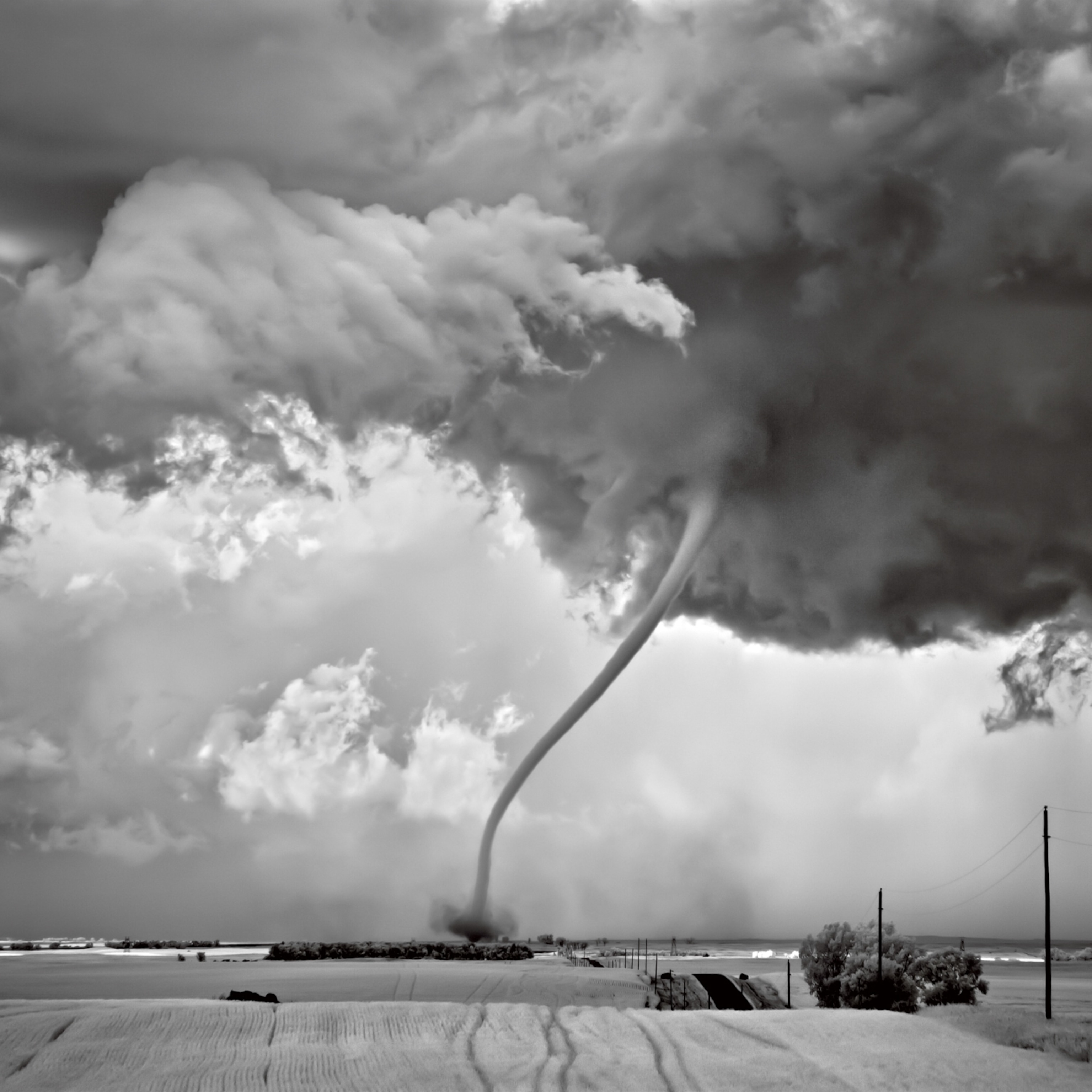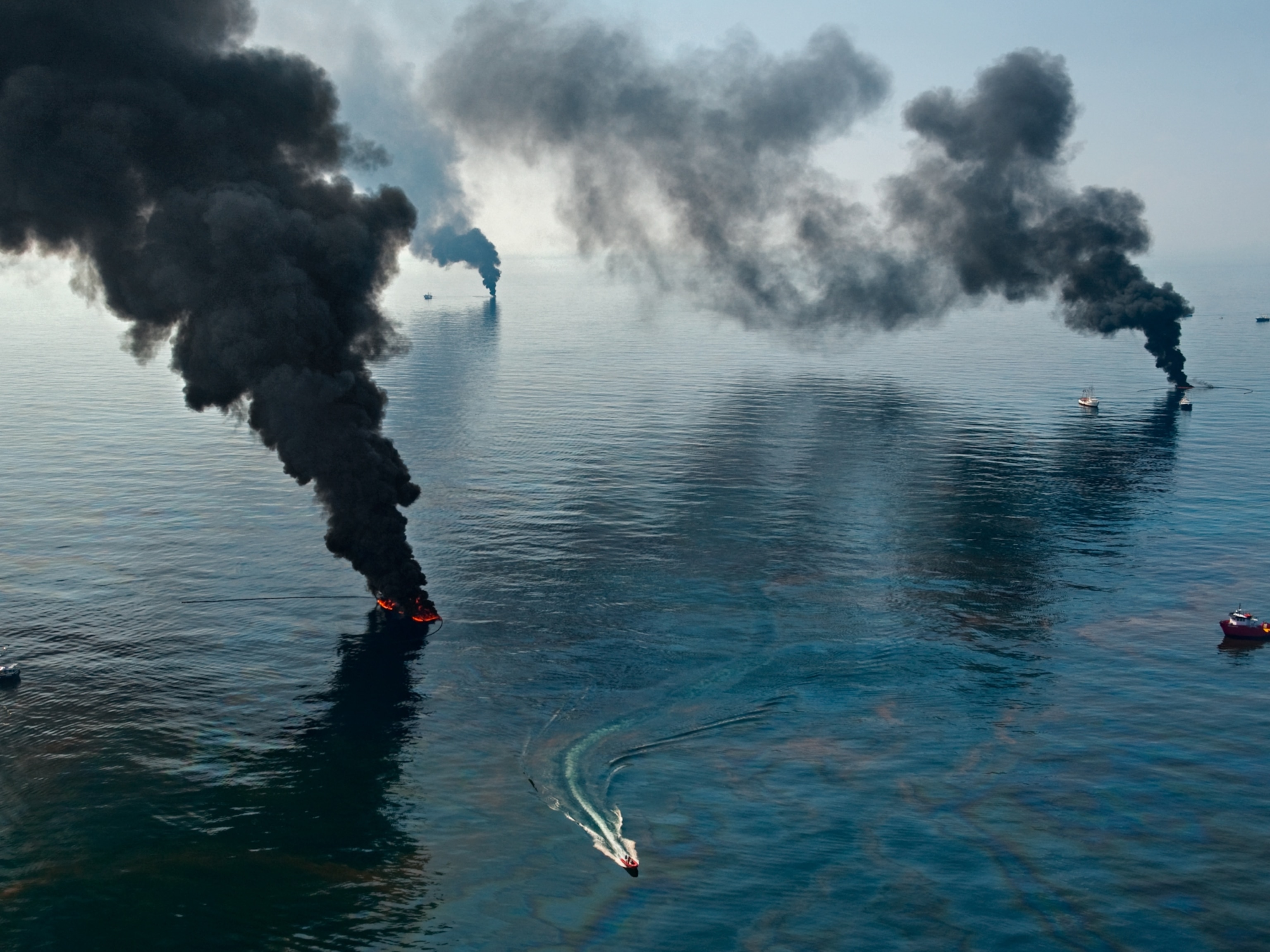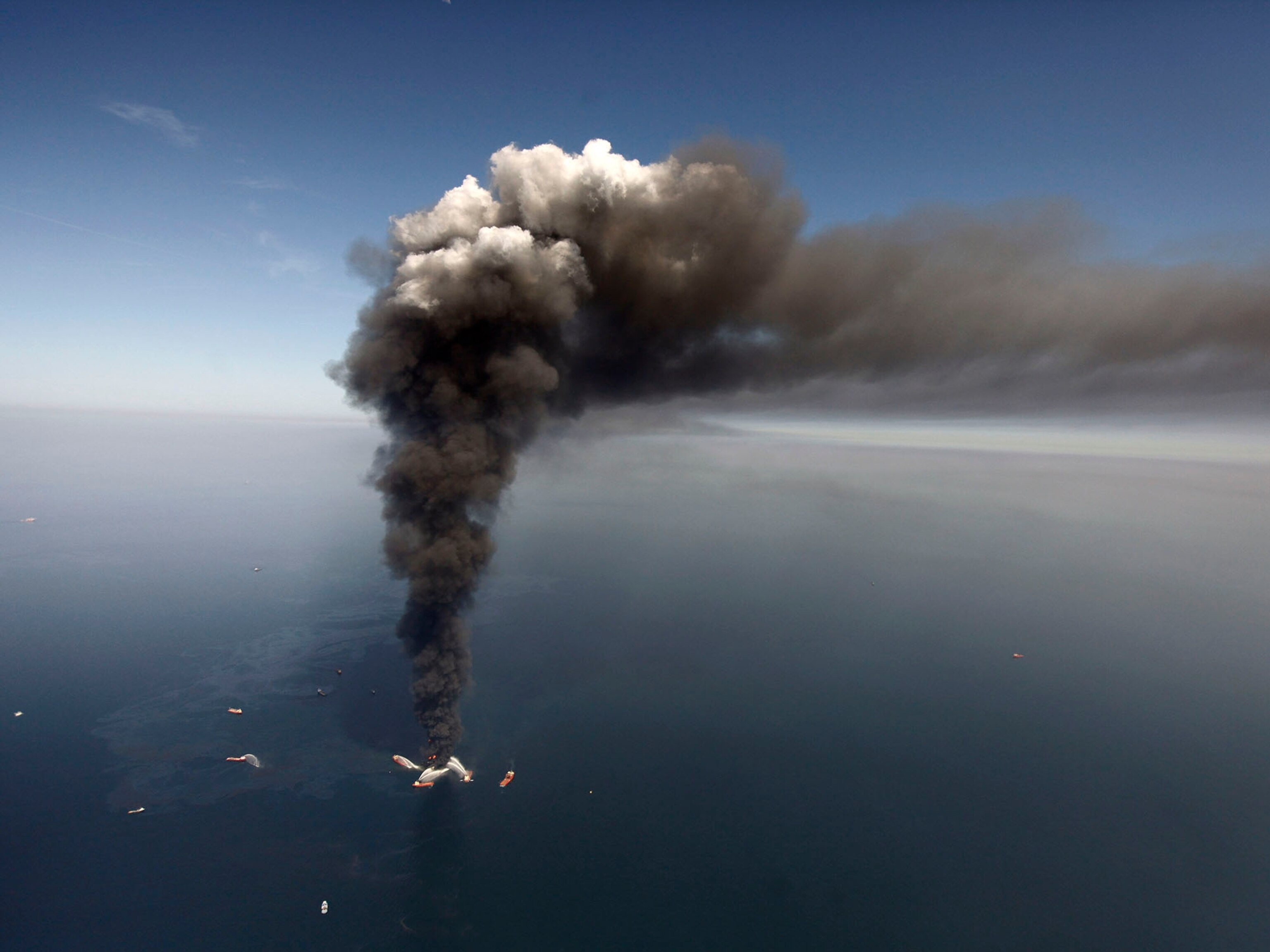
The Next Oil Spill: Five Needed Mandates to Head it Off
With industry pushing frontiers, commission urges attention to new risks.
This story is part of a special series that explores energy issues. For more, visit The Great Energy Challenge.
As the oil industry forges deeper into riskier waters and other frontiers, both companies and government overseers need to radically overhaul their approach to safety, concluded the U.S. commission appointed by President Obama to examine the causes of BP's disastrous oil spill in the Gulf of Mexico.
(Related: Gulf Oil Spill News and Pictures)
The seven-member commission agreed unanimously that the spill was not caused by the actions of one rogue player, but by a systemic failure born of years of complacency.
"In the past 20 years, exploration moved into deeper and deeper and riskier and riskier areas of the Gulf of Mexico, resulting in abundant revenues for private companies and the federal Treasury," said former Florida Senator Bob Graham, co-chairman of the panel.
Thanks to impressive technological advances, frequently compared to those of the U.S. space program, "we became lulled into a sense of inevitable success," he said.
"On April 20, after a long period of rolling the dice, our luck ran out," said Graham.
(From National Geographic magazine: "Is Another Deepwater Disaster Inevitable?")
In its 400-page final report, presented as required within six months of the panel's first meeting in July, the commission made numerous recommendations for both the industry and the government. All go well beyond the safety measures taken so far.
The panel's other co-chairman, William Reilly, former administrator of the U.S. Environmental Protection Agency, noted that there are industry plans for drilling as deep as 10,000 feet below the surface of the water, twice the depth of BP's well. He said that current energy needs compel riskier exploration and development, because the world's remaining petroleum resources are in more difficult terrain. "The reason we're in deepwater is that's where the oil is," said Reilly. "They are not only in deepwater, they are in deeper and deeper water."
(From National Geographic magazine, see Pictures of Disaster)
Marilyn Heiman, director of Pew Environment Group's offshore energy reform project, praised the commission for compiling the evidence needed for more protective legislation and industry action.
"Deepwater and the ultra deepwater and the Arctic—we are talking about really pushing the edge of the envelope, and the risks really are increased," she said. "We need to increase safety measures and response to that same level. Technology has far outpaced our ability to respond and prevent an oil spill."
Many of the recommendations, including new appropriations and new fees on industry, are likely to face a tough road ahead in the new Congress, although commission members noted that there were a number of steps the Obama administration could take on its own without congressional approval.
The American Petroleum Institute (API), while praising the commission for recommending increased funding for regulatory agencies, said that the industry had already taken significant steps to improve offshore safety. It said it had already begun the process of developing a deepwater safety program that draws on the best practices of the nuclear and chemical industries. And the API, in a prepared statement, expressed concern that the commission "casts doubt on an entire industry based on its study of a single incident."
Among the key recommendations by the National Commission on the BP Deepwater Horizon Oil Spill and Offshore Drilling:
Serious, continuing safety research. The commission said Congress should require new oil and gas industry fees to pay for the government's environmental science and regulatory review of offshore oil and gas activities. Not only did the commission urge establishment of a new independent government safety agency, it said the industry needs to have its own safety organization to establish new norms for offshore operations—and it should be separate from the API or other advocacy or trade associations.
Commission member Terry Garcia, executive vice president for mission programs for the National Geographic Society, noted that after the 1989 Exxon Valdez spill in Alaska's Prince William Sound, the industry did make significant efforts to improve tanker safety, which paid off.
"But like an army always preparing for the last war, industry and government failed to anticipate future risks," Garcia said. "It is stunning how primitive our ability to respond to spills remains and how undeveloped our ability to cap a deepwater blowout was prior to Macondo," the well that took 87 days to control, spewing an estimated 4.9 million barrels of oil in the Gulf in the worst offshore oil spill in U.S. history.
(See satellite pictures of the Gulf oil spill's early evolution.)
"We need a serious investment in response and containment technology by industry and government, and it shouldn't be just a one-shot investment," said Garcia. "It's going to have to be an ongoing commitment, and one that continually monitors new risks as they emerge, not just in the Gulf and high-risk areas, but everywhere we drill."
(See "Exxon Valdez Anniversary: 20 Years Later, Oil Remains.")
Substantial, clear financial responsibility. The commission called for Congress to "significantly increase the liability cap and financial responsibility requirements" for offshore drilling.
The seven members could not reach agreement on the new levels of financial responsibility that should be required, and they said they did not have sufficient time to consult with the insurance industry on what numbers made sense.
But the report noted that the current liability cap, set after the Exxon Valdez spill, of $75 million, was insufficient. BP, which has voluntarily waived that cap, already faces damages of tens of billions of dollars.
The commission noted there is no guarantee other companies in the future will agree to such a waiver.
Also, insufficient, the commission noted, were the current government requirements for companies to show they have financial wherewithal to address any accident. Currently the government requires evidence of financial resources ranging from $35 million to $150 million. The commission noted there are many smaller operators for whom higher thresholds would be an issue, and the government had to find a compromise that ensured financial responsibility while not driving independent operators out of the market.
Better understanding of chemicals and berms. Although the commission concluded that the federal government "made reasonable decisions" regarding the use of chemical dispersants in the Gulf of Mexico, the panel noted that officials did so with little information on the long-term effects of the chemicals or the dispersed oil.
The commission noted the tradeoffs involved in using dispersants, which spread oil through the water column to protect the shorelines and fragile marsh environments.
The commission did not make a strong statement on whether dispersants should or should not have been used in the Gulf, but said the federal government needed to update and periodically review its dispersant testing protocols and change the pre-approval process to take into account such factors as the volume and geographic reach of potential spills.
But the commission did take a strong stand against the kind of dredged barrier berm constructed by Louisiana in an effort to protect its coast in the wake of the spill. "Offshore barrier berms and dredged barriers should not be authorized as an oil spill response," the commission said, noting that the time and expense involved and the changing marine environment render such an approach ineffective. The commission noted the failure of the Louisiana berm project, which was only 6 percent complete by the time the well was capped and trapped 1,000 barrels or less of spilled oil.
(Read about how nature is fighting back against the oil spill.)
Taking special care in the Arctic. The commission noted that safety standards over and above those required to protect the Gulf of Mexico would be needed in the fragile and punishing environment in the offshore Arctic.
Currently, there is no U.S. drilling under way there, but the international oil giant Shell* had plans to embark on exploratory drilling in the Chukchi and Beaufort Sea areas off Alaska's north coast this spring, having paid $2.1 billion to the U.S. government to obtain leasing rights. Shell has said its Alaska project includes extraordinary measures aimed at environmental protection. But the commission stressed the need for further regulation, and said that the U.S. Department of State should work with the other countries that border the Arctic seas—Canada, Russia, Norway and Denmark—to establish one international standard of protection for this area of extreme cold, extended seasons of darkness, hurricane-strength storms, and pervasive fog. The commission also said that Congress should allocate funds to establish a Coast Guard presence in the area; currently, the nearest such station is 1,000 miles away, said Heiman of Pew Environment Group.
Although the water is more shallow and well pressures likely to be less than those of the deepwater Gulf of Mexico, the commission said the difficulties in responding to a spill and the increased environmental risks mandated further protection and study into risks.
But the commission stopped short of calling for a moratorium on Arctic drilling. "We feel that research that has a specific timeline and that would help answer specific questions is what is required," said commission member Fran Ulmer, chancellor of the University of Alaska Anchorage, who serves on the Alaska Nature Conservancy.
Reducing dependence on oil. Although the commission did not make a specific recommendation on the need to seek oil alternatives, it concluded with a chapter on the need for an U.S. energy policy that seeks less use of petroleum. "The nation must begin a transition to a cleaner, more energy-efficient future," the report said. "Nonrenewable oil and gas resources are just that—nonrenewable," and policy must focus on maximum energy efficiency and renewable substitutes. Graham expanded on the topic at the commission news conference when asked about the prospect of offshore drilling taking place closer to Florida, a long-running political battle in which he was embroiled during his years in the Senate. "If America were to go with a ‘Drill, baby, drill' philosophy, we would exhaust our resources by 2031," said Graham.
Relying more heavily on imports, as the United States has been doing for decades, would stretch those resources as far as 2068. "Those numbers indicate the imperative of having as part of our energy policy holding back some of these resources for future generations, and moving aggressively to reduce America's almost insatiable appetite for petroleum," which is currently consuming nearly one-quarter of all the oil produced in the world. "Those numbers are not sustainable," Graham said.
(Read of National Geographic Explorer Sylvia Earle's journey: Return to the Gulf: Mission Blue)
*This report is produced as part of National Geographic’s Great Energy Challenge initiative, sponsored by Shell. National Geographic maintains autonomy over content.
Editor's note: A previous version of this story incorrectly called the Deepwater Horizon oil spill the worst in U.S. history. At 5 million barrels, it was the worst U.S. offshore spill, but on land it was surpassed by the Lakeview gusher in 1910 and 1911, which spilled 9.4 million barrels of oil in California's San Joaquin valley.








